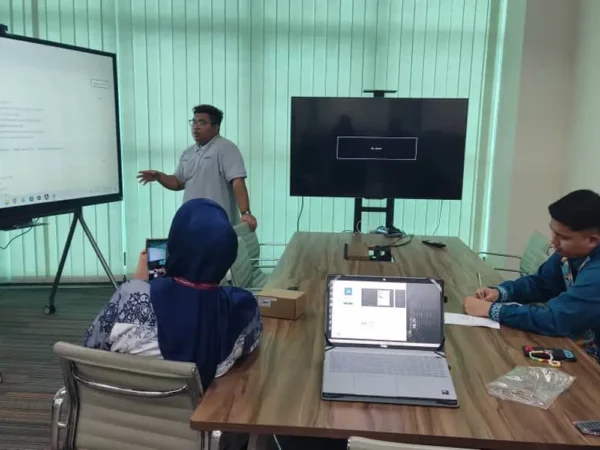In today’s hyper-connected world, Smartboard security in meeting rooms is paramount. As technology advances, so do the threats targeting these devices. A Smartboard running on Windows 86 is a common fixture in modern meeting rooms, making it crucial to understand and implement effective cybersecurity measures.
Understanding the Risks: Smartboards equipped with Windows 86 are integral to collaborative work environments, offering interactive displays and digital tools that enhance productivity. However, like any connected device, they are susceptible to cybersecurity threats. Potential risks include:
- Unauthorized Access: Intruders could gain access to your network through vulnerabilities in the Smartboard.
- Data Breaches: Sensitive information displayed or shared on the Smartboard could be intercepted.
- Malware and Ransomware: These threats can exploit vulnerabilities to disrupt operations or steal data.
- Network Interference: Compromised Smartboards could serve as entry points for attacks on your broader network.
Best Practices for Securing Your Smartboard:
- Update Software Regularly: Keeping your Smartboard’s software and Windows 86 operating system up-to-date is crucial for Smartboard security. Updates often include security patches that address newly discovered vulnerabilities. Regularly check for and install updates to ensure your system is protected against the latest threats.
- Use Strong Passwords and Authentication: Implement strong, unique passwords for accessing the Smartboard and related accounts. Avoid using default passwords and consider enabling multi-factor authentication (MFA) for an added layer of Smartboard security. Ensure that passwords are changed regularly and not shared among multiple users.
- Network Security: Secure your Wi-Fi network with robust encryption protocols (e.g., WPA3) and use a firewall to protect against unauthorized access. Segment your network to isolate the Smartboard from other critical systems, reducing the risk of a security breach spreading throughout your network.
- Access Controls: Limit access to the Smartboard to authorized personnel only. Implement role-based access controls to ensure that users have the minimum necessary permissions. Regularly review and update access permissions to reflect changes in personnel and job roles.
- Data Encryption: Encrypt sensitive data transmitted to and from the Smartboard. Encryption protects data in transit and at rest, making it unreadable to unauthorized users. This is especially important for information shared during meetings and presentations.
- Regular Security Audits: Conduct periodic security audits to identify and address potential vulnerabilities. These audits should assess both the Smartboard’s hardware and software, as well as its integration with the overall network infrastructure.
- Educate Users: Provide cybersecurity training for all users of the Smartboard. Educate them on recognizing phishing attempts, avoiding suspicious links, and practicing good digital hygiene. Users are often the first line of defense against cyber threats.
- Backup and Recovery: Implement a robust backup and recovery plan for the Smartboard’s data. Regularly back up important information and ensure that you have a strategy for quickly restoring functionality in the event of a cyber incident.
- Physical Security: Ensure that the Smartboard is physically secure. This includes using locks or mounting it in a secure location to prevent tampering or theft. Physical security measures complement digital protections and contribute to overall security.

Image Gallery
About Our Solution
Smartboard security for devices running Windows 86 is essential for maintaining the integrity of your meeting room’s cybersecurity. By regularly updating software, enforcing strong passwords, and educating users on cybersecurity best practices, you can significantly reduce the risk of cyber attacks. Taking proactive steps like encrypting data and conducting security audits will help protect your organization from unauthorized access and ensure that your Smartboard remains a secure asset in your collaborative environment. Stay vigilant and prioritize Smartboard security to maintain a safe and productive workplace.







